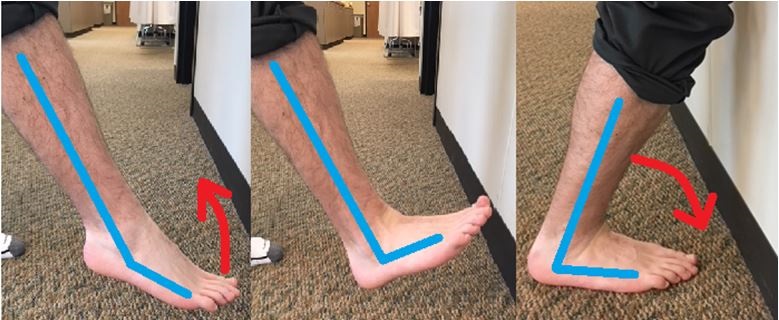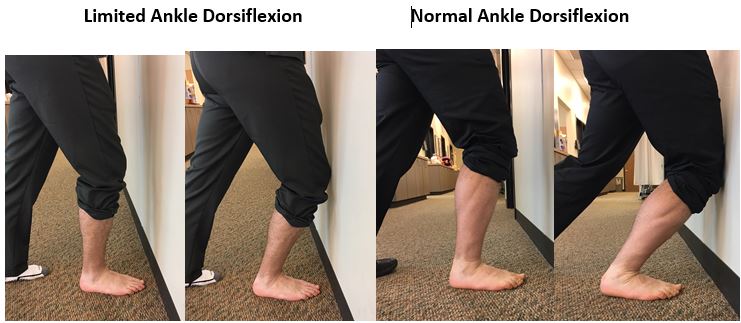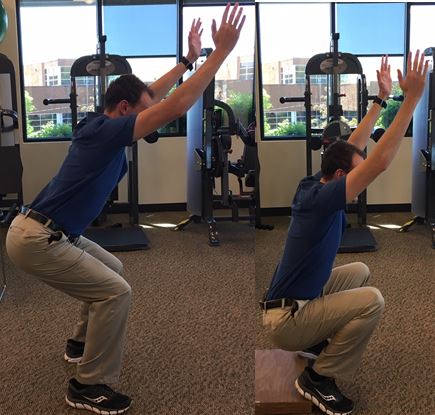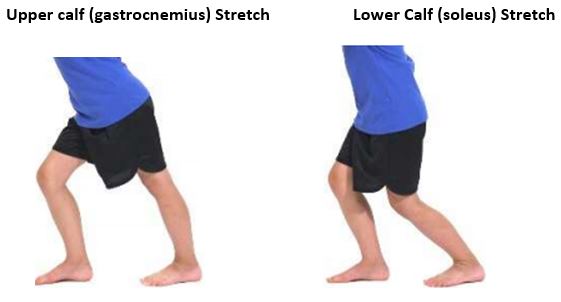By Paul Jaques, DPT, CSCS
The Corvallis Clinic

Poor ankle flexibility is associated with several common painful conditions, such as Achilles tendon pain, plantar fasciitis, knee pain, and recurrent ankle sprains. Poor ankle dorsiflexion (door-see-flex-shun) is an ankle motion that is often limited in people with these foot, ankle, and knee problems.
What is Ankle Dorsiflexion?
Ankle dorsiflexion is the ability of your foot to move upward toward your shin (see first two photos below, L-R). When you are standing, this is the ability of your lower leg to move forward over your foot (see last image below).

Reduced ankle dorsiflexion can be caused by many factors, but the most common is simply tightness of the calf muscles.
Reduced dorsiflexion motion can cause you to move abnormally during activities such as running, jumping, hiking, squatting, and kneeling. This may increase the strain on the foot, Achilles tendon, and knee joint.
Evaluating Ankle Dorsiflexion
To assess if you may have poor ankle dorsiflexion, perform these two simple tests:
Knee to Wall Test: Barefoot, stand with your toes about an inch away from the wall. Keeping your heel on the floor, bend one knee to the wall. If you can touch your knee to the wall without your heel coming up, move your toes an inch further from the wall and repeat. Normally, you should be able to have your toes 4-5 inches from the wall and be able to touch your knee to the wall without your heel rising. See images below:

Overhead Squat Test: Raise your arms overhead and squat. Take note of how far down you can go. Now place a small object, such as a book, under each heel, and squat again. Is it much easier to squat lower? This may mean you would benefit from improving your ankle dorsiflexion. See images below:

How to Improve Dorsiflexion
Calf stretching exercises are commonly used to help improve ankle dorsiflexion. The following stretches are generally held for at least 20 seconds, and repeated 2-4 times.

When you perform these stretches, you should feel a stretch in your calf muscles or Achilles tendon. If you feel pain anywhere, or a pinch in the front of your ankle, then you may benefit from a formal examination by your primary care provider or a physical therapist.
Paul Jaques (Jake-wiss), DPT, is a Licensed Physical Therapist and a Certified Strength and Conditioning Specialist with The Corvallis Clinic Physical Therapy Department at its Walnut Boulevard-Corvallis location. Paul enjoys treating many different conditions, but he has a particular interest in sports medicine. He has provided medical tent assistance at several local events, such as the Mudslinger Mountain Bike Race, the Fall Festival 5K run, and The Dirty Dash in Albany. To schedule an appointment, call 541-754-1265; to request an appointment online, go to New Patient Appointment Request.
